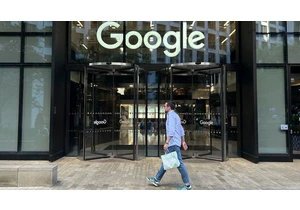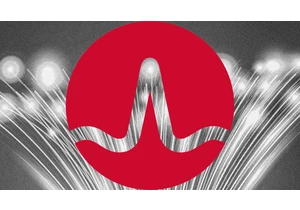Centuries before encrypted texts and secure video conferencing, people relied on physical engineering to keep their written messages sturdy, sealed, and secure against eavesdroppers.
In a new book, researchers Jana Dambrogio and Daniel Starza Smith outline the “letterlocking” techniques used by figures from Queen Elizabeth I to poet Emily Dickinson to protect their paper letters—and the methods Dambrogio, Smith, and a growing number of other scholars have developed to reverse-engineer those historic documents, from algorithmic analysis of X-ray images to careful paper modeling.
Dambrogio, a conservator at the Massachusetts Institute of Technology Libraries, traces her interest in the subject back about 25 years, to a fellowship at the Vatican’s archives. There, she noticed security features in a trove of historic legal and accounting documents—different kinds of mechanisms engineered to keep them sealed, make tampering visible, and verify that senders were who they claimed to be. The features were fascinating on their own, but understanding how they worked also seemed crucial to preserving the documents, ensuring that these security aspects wouldn’t be inadvertently lost during repairs.
“That object is like the time capsule from that time period,” Dambrogio says. “If I change anything not knowing, then that object loses its voice.”
To understand how the documents functioned, she built more than 100 models of objects in the collection. Later, she connected with Smith, now a senior lecturer in early modern English literature at King’s College London. Smith explains that while his colleagues had long been interested in the physical aspects of historic writings—like how poet John Donne arranged words on a page—scholars had largely overlooked the technical side of how letters were assembled.
“When Jana showed me these models, suddenly all this kind of material fell into place,” he says. “Because you could see through modeling how these objects worked as kind of engineered structures and devices, designed to travel long distances and keep information safe.”

Together, the pair began studying what they came to call letterlocking, reconstructing through close analysis and modeling the many ways historic letters were folded and secured. These included elaborate locks created from sliced-off portions of the letter paper itself—designed so senders could rejoin them and confirm the letter hadn’t been replaced in transit. These sliced strips were passed precisely through slits in the folded document before being sealed with wax.
They searched for additional examples—from letters listed on eBay to ceremonial correspondence between heads of state stored in the National Archives—learning to recognize the telltale markings of different folding and locking patterns. In 2012, they established the Unlocking History Research Group, which grew to include dozens of other researchers.
As their work expanded, they began constructing a taxonomy of letterlocking, creating a periodic table-style diagram categorizing the combinations of folds, insertions, holes, and adhesives used to secure letters. This gave researchers a common language to describe and compare techniques.

When they learned of the Brienne Collection—a centuries-old Dutch postmaster’s trunk containing around 2,600 undelivered letters from the late 1600s and early 1700s—they worked with a team of experts to explore the letters’ seals and contents without disturbing them. X-ray experts captured painstaking, high-resolution scans of the documents, while computer scientists devised new computer vision algorithms for what they called “virtual unfolding” of the letters.
A paper by the team, published in Nature in 2021, has since been cited in research across fields including AI, cryptology, and literary history.
“It’s been so much fun tracking the citations,” Smith says. “We’ve been cited in antenna studies. I didn’t know anything about antenna studies.”

Their research also offers new insights into the personalities and correspondence methods of historic figures. In their book, Dambrogio and Smith cite an example where King Charles I verified a letter was sent by a particular secret agent based on its fold pattern, as well as a 17th-century English statesman scolding his university student son for folding his letters “like those that come out of a grammar school.” And one of Donne’s letters, Smith says, appears to reflect his writing style in its physical engineering, using an unusual and ornate locking mechanism.
“It was so immediately striking that the way he was folding his letter was so similar to what else I knew about him,” Smith says. “His love of complexity and difficulty and elegance, and not doing things the way that everybody else did them.”
Through projects like a series of YouTube videos and detailed step-by-step diagrams included in their book—the authors say they chose MIT Press not only for Dambrogio’s affiliation but for the publisher’s experience producing graphical engineering texts—they hope to inspire more people to explore the field. That includes scholars building their own models of historic locking techniques, even without a background in engineering or paper arts.
While letterlocking techniques became less common after the rise of the modern pre-stickied envelope in the 1800s, the goals of security, authentication, and aesthetics remain familiar—even in the age of digital communication.
“People’s desire across time and space is to communicate with each other and to protect that for the person for which it’s intended,” says Dambrogio. “We still do that with two-step authentication in our bank accounts and whatnot.”
Inicia sesión para agregar comentarios
Otros mensajes en este grupo.

As Big Tech kicks off its quarterly earnings season this week, the industry’s bellwether companies have been thrust into a cauldron

Weeks ahead of his death, Pope Francis dedicated this month’s prayer intention to

Remember when TikTok went nuts for “Dubai chocolate”? Well, that fervor is now causing an international shortage of pistachios.
The trend took off in 2023 when food reviewer Maria Vehera

Google will confront an

Instagram has begun testing AI-powered technology designed to proactively identify accounts it suspects belong to teens—even if the user has listed an adult birthdate—and place them under special

Behind the curtain of generative AI breakthroughs and GPU hype, a quieter transformation is taking place. Data center architecture and its prowess have become a fierce battleground as AI models ex

Amid the video podcast boom, Netflix is making its own move into the space.
